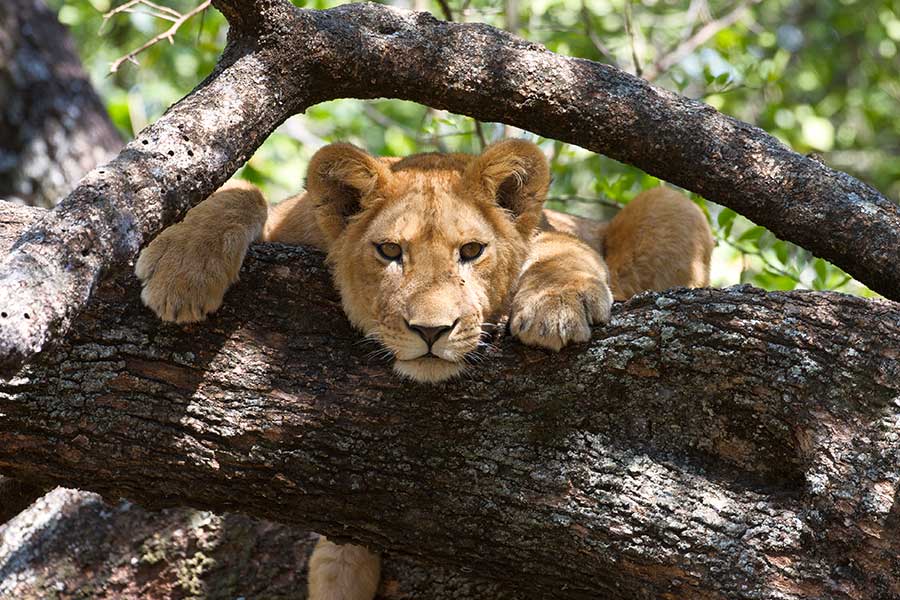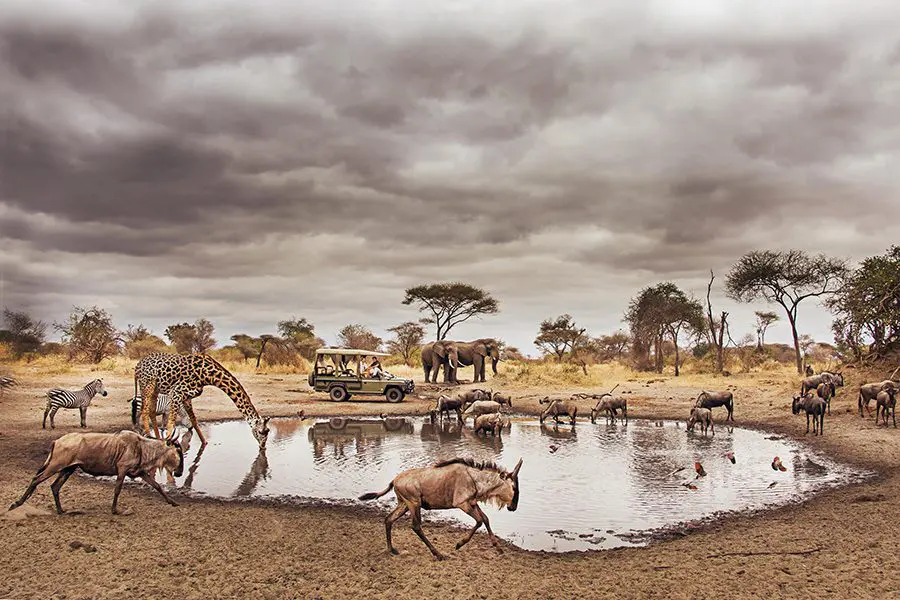Language
- English
- Español
- Français
- Italiano
- Português
- Deutsch
- Nederlands
Currency
- AUD Australian Dollar
- CAD Canadian Dollar
- EUR Euro
- GBP Pound Sterling
- USD US Dollar
- ZAR Rand

costs
Tanzania is one of Africa's top safari destinations, home to world-famous parks like the Serengeti and Ngorongoro Crater, and experiences such as witnessing the Great Wildebeest Migration. The cost of a safari in Tanzania can range from moderately priced group tours to ultra-luxurious private experiences, depending on factors such as accommodation, time of year (the best time to visit Tanzania is during the dry season), and how you choose to travel between destinations.
The Great Wildebeest Migration, one of the most spectacular wildlife events on Earth, also influences pricing – safaris during peak migration months tend to be more expensive. Below, we break down the cost of a Tanzania safari, including different safari types, varying Tanzania accommodation, and additional costs to consider.

The type of safari you choose greatly impacts the cost. Factors including group size, mode of transport (vehicles and aircrafts used), and the level of exclusivity all determine pricing. While the average trip to Tanzania lasts around 12 days, the duration of your stay can vary based on the activities you choose; the number of national parks or conservations, key attractions you want to see, and the level of comfort you desire.
A Tanzania safari typically ranges from $700 to $2,500 per person per night based on double occupancy, depending on the type of experience, accommodation, and season. Entry-level guided drives start at $700, while mid-range drive and fly-in options fall between $1,000–$1,700. Luxury fly-in safaris and 5-star options reach up to $2,500. Costs increase during the Great Wildebeest Migration and peak travel months, and vary based on transport choices, lodge category, and optional extras like private vehicles.
| Luxury Fly-in | Mid-range Fly-in |
Luxury Drive** | Mid-range Drive** | Entry-level Drive** | 5 Star Options | ||||||
|---|---|---|---|---|---|---|---|---|---|---|---|
| Low | High | Low | High | Low | High | Low | High | Low | High | Low | High |
| $1,900 pps* | $2,500 pps* | $1,500 pps* | $1,700 pps* | $1,000 pps* | $1,500 pps* | $800 pps* | $1,000 pps* | $700 pps* | $800 pps* | $1,800 pps* | $2,500 pps* |

Tanzania offers a wide range of accommodation and safari experiences, from budget-friendly to high-end luxury lodges. Itineraries can be tailored to suit different budgets and preferences. These rates are calculated ranges per person sharing in a double or twin room:
| 4-star comfort | 4-star luxury | 5-star luxury | |||
|---|---|---|---|---|---|
| Low | High | Low | High | Low | High |
| $600 pps* | $850 pps* | $1,000 pps* | $1,500 pps* | $1,400 pps* | $2,200 pps* |
*All the costs in this blog are guidelines only and an average for per person, per night, sharing a room in High and Low Season. They exclude international flights, visas and optional activities.
**This refers to guided driving in a safari vehicle, and not self-drive.
Please note that conservation fees, levies, and permits are all subject to change. Peak or high season generally runs over Christmas and New Year, and from about July to October.

The cost of a Tanzania safari is closely tied to the time of year, with peak seasons—from January to early March and June to October—typically being the most expensive. These months offer exceptional game viewing and coincide with major wildlife events like the Great Wildebeest Migration, especially from May to October, when herds cross the Serengeti's Grumeti and Mara Rivers.
In contrast, the low and shoulder seasons—from mid-March to May and again in November to early December—bring seasonal rains, which can deter some travellers. However, they offer significantly lower prices, fewer crowds, and still rewarding wildlife experiences. Since tours and safaris operate year-round, your travel window can be tailored to your budget and the wildlife spectacles you most want to witness.
It’s important to note that ‘all-inclusive’ may not be as comprehensive as you first expect. In Africa, and on safaris, that can mean a range of things and it’s always worth clarifying what is not included. One of the first things to do is consult our blog on visa free African countries for US citizens as that may tick off one of the boxes regarding associated costs already. What possible additional costs could you come across? Have a look at our list below:
Planning and understanding these potential costs will help you budget more accurately for an unforgettable Tanzanian adventure.
As with any destination, your budget will shape your safari experience. While high-end lodges and private safaris offer unparalleled luxury, mid-range and budget options still provide incredible wildlife encounters and ample comfort. The key is to discuss your preferences with your Africa Safari Expert to ensure you get the best safari experience within your budget.
Help Me Plan